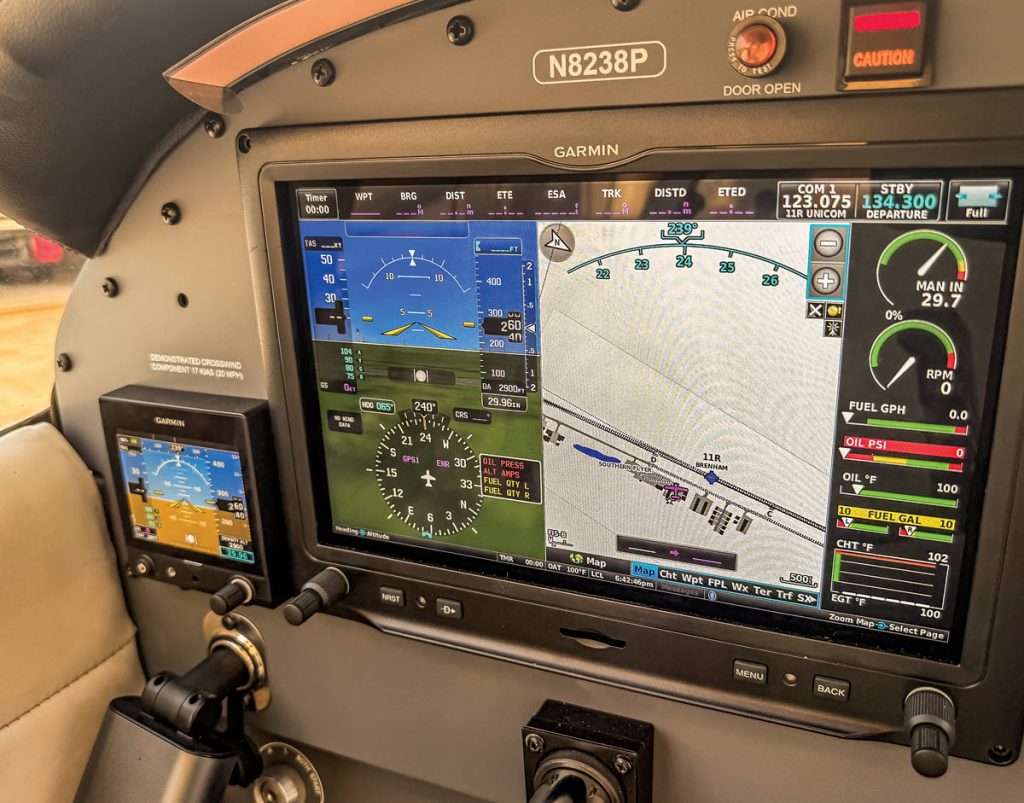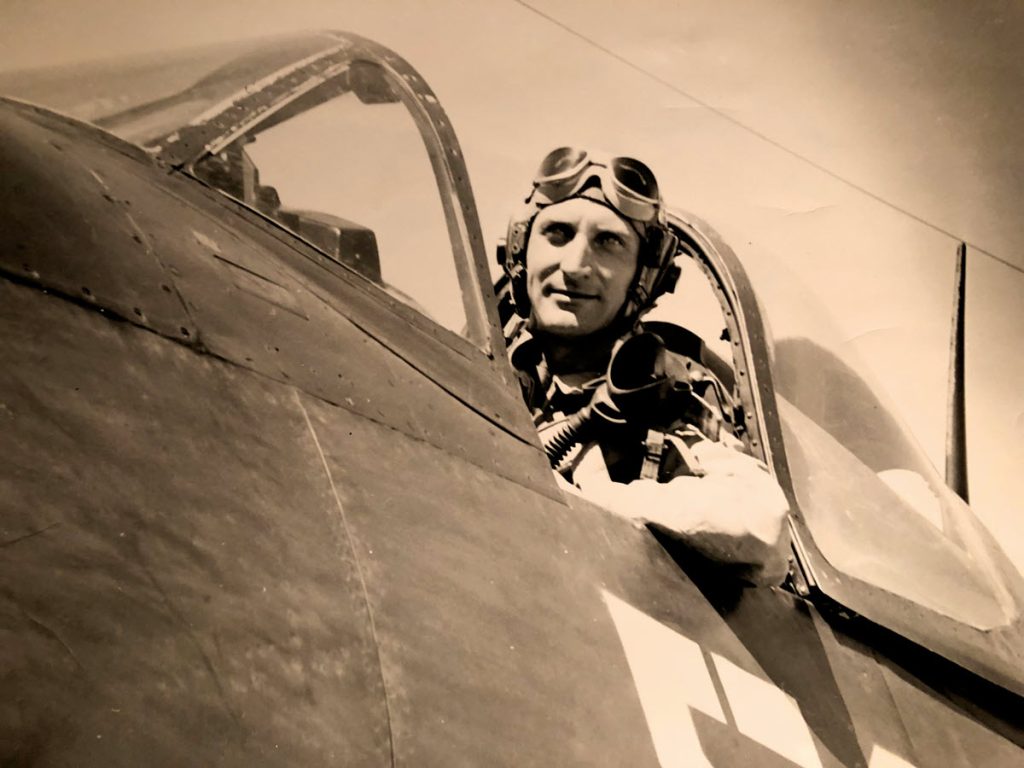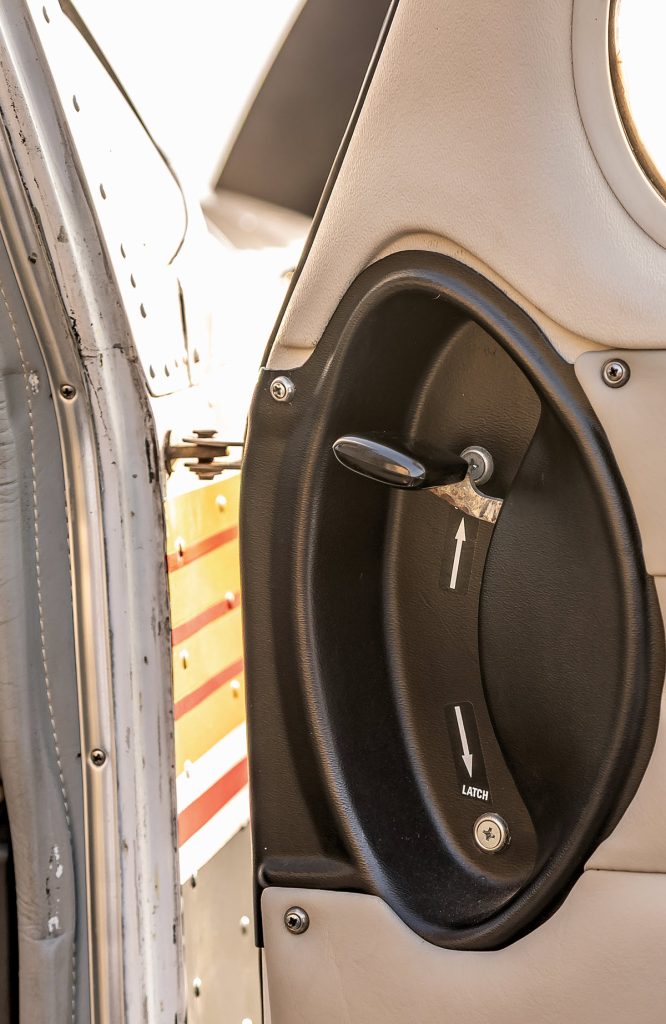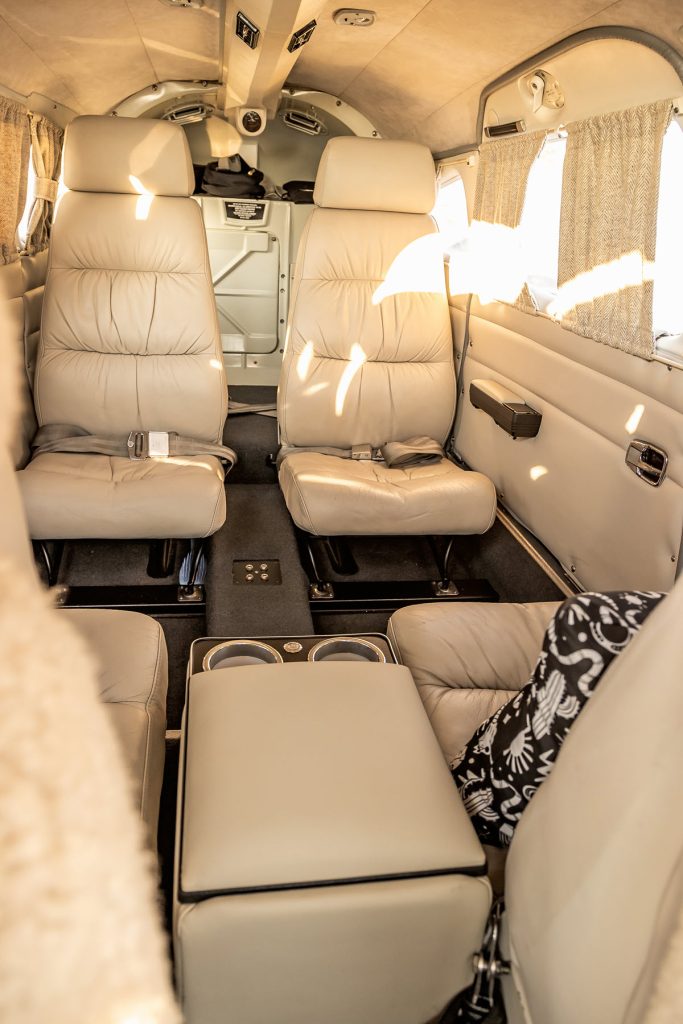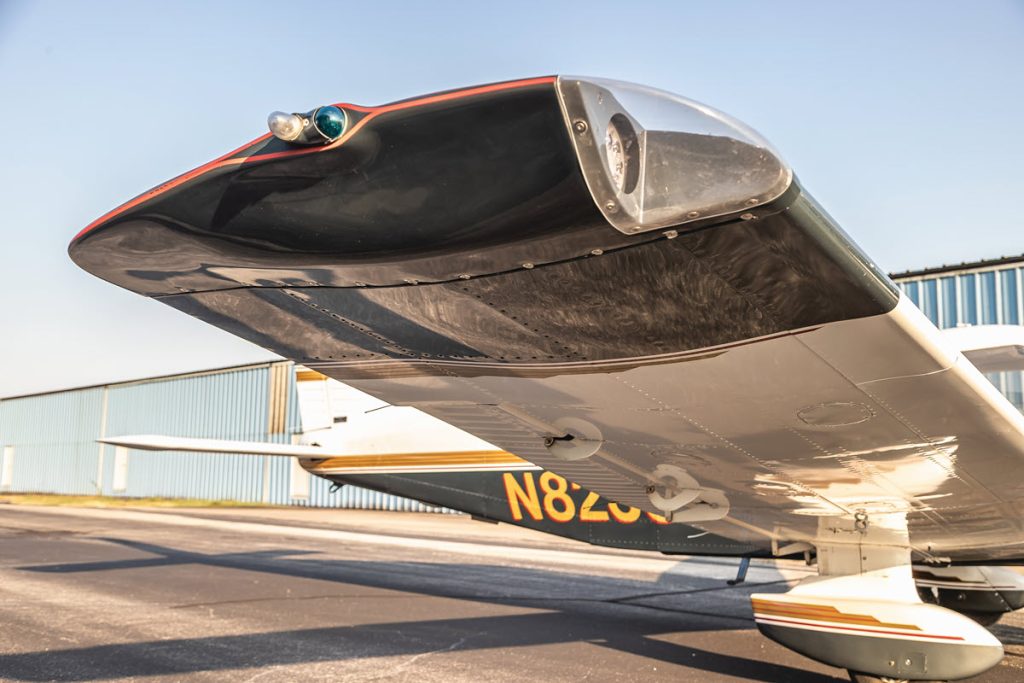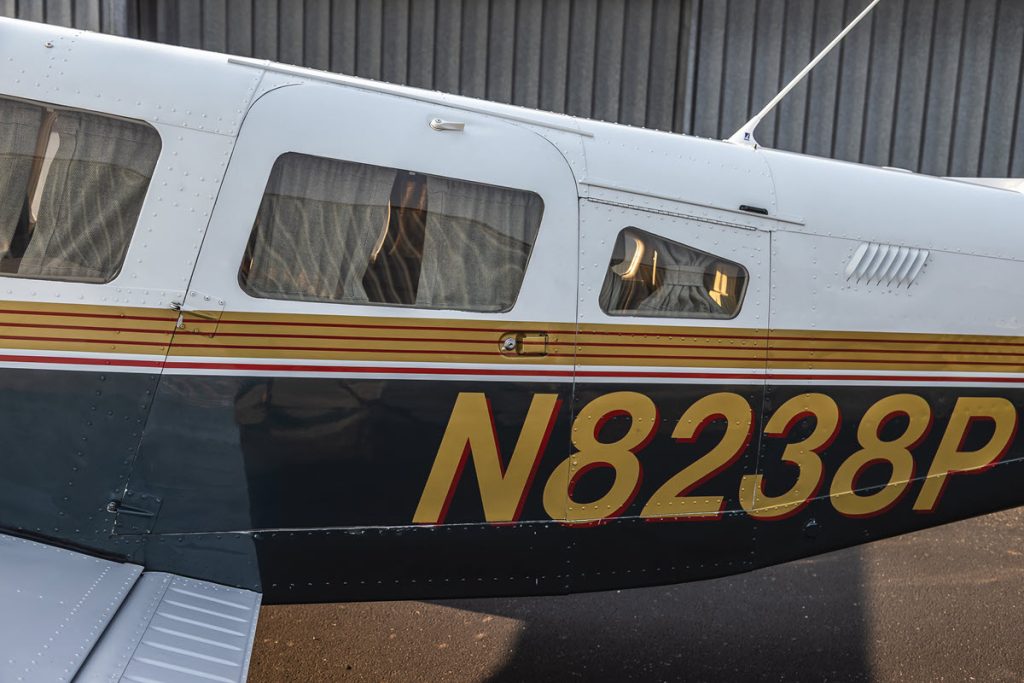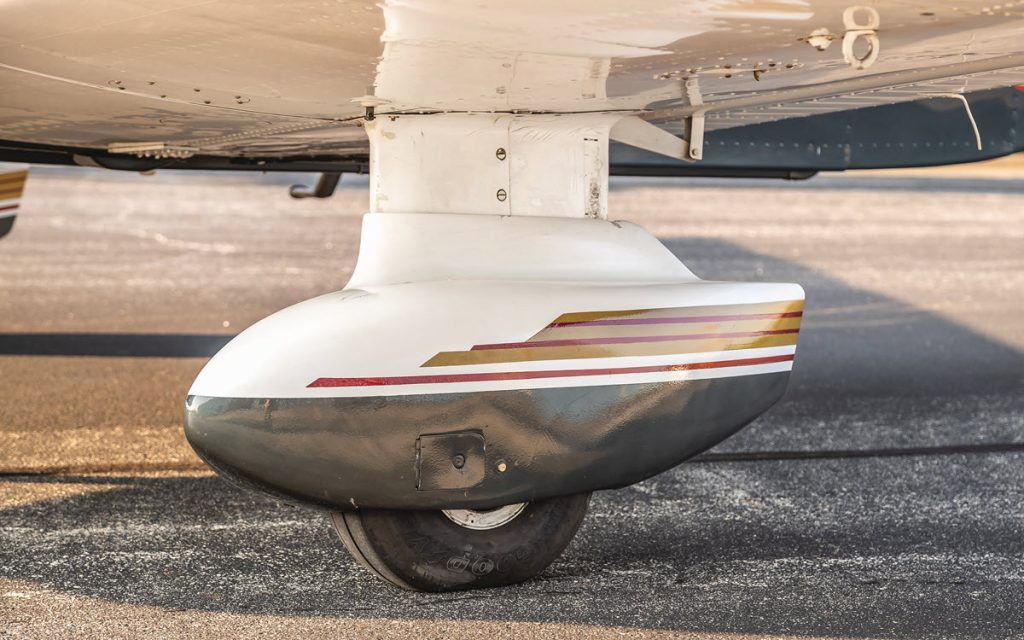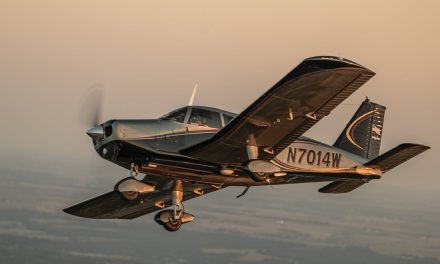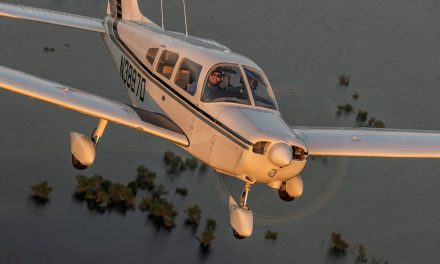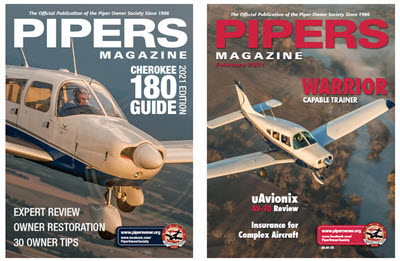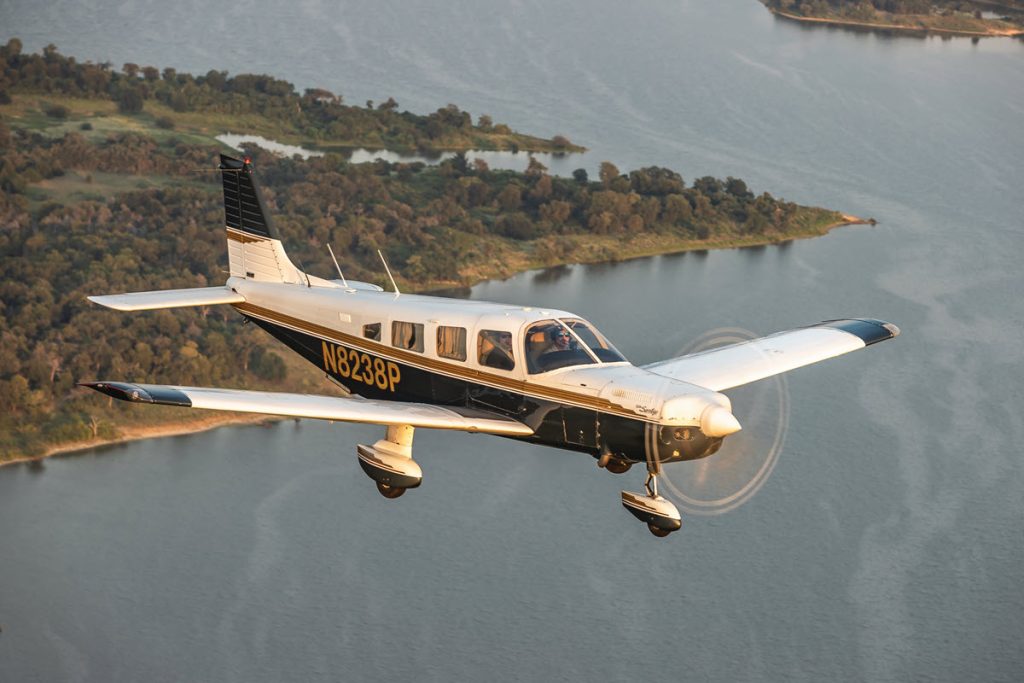
By Michelle Adserias
Connor Byer’s mother had been encouraging him to become a pilot since he was a young child. It’s not surprising, then, that she coaxed him into taking his first flight when the opportunity came. Interestingly enough, it was not in a fixed-wing aircraft. It was in a helicopter with the doors removed “Looking back, I think it was an R44,” he explained. Connor sat in the front, watching instruments as the pilot maneuvered the aircraft. He was hooked!
He initially looked into getting his rotary wing certification at the former Weiser Airpark (KEYQ) in Cypress, Texas. When he discovered helicopters were far more expensive than fixed-wing aircraft, he adjusted his dreams. Connors first flight in an airplane was just as exciting, so he pursued his PPC at Weiser Airpark, completing it in 2011. He appreciates the flexibility his current certification offers, though, Connor did say, “I still have an interest in a rotary-wing license, just for the cool factor.”
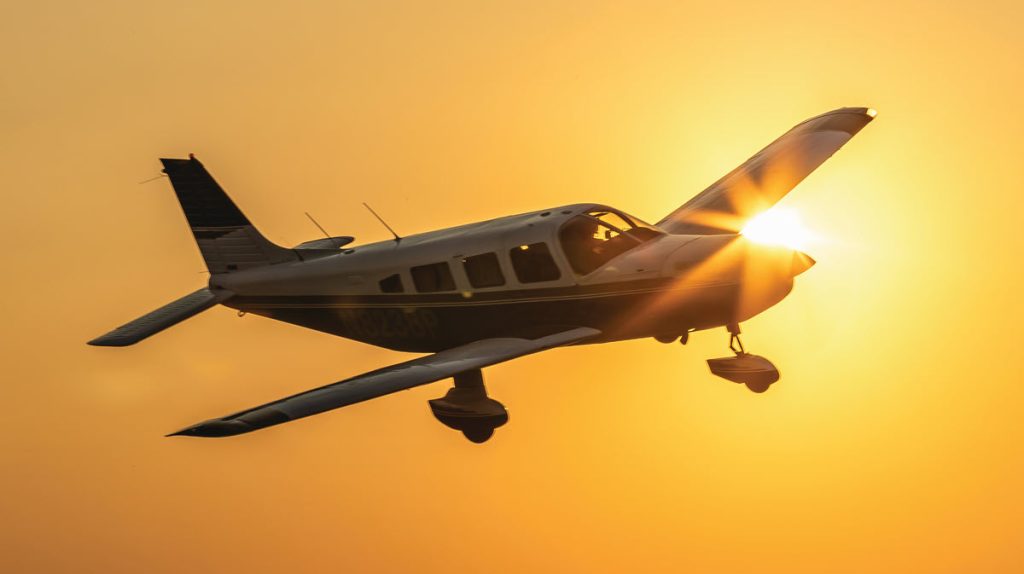
When he became a pilot, Connor was following in his grandfather’s footsteps. As a major in the Marines, his grandfather flew a Corsair and a Grumman F-9 Panther in World War II and received a Distinguished Flying Cross award for his service. Connor was very interested in his military background and would ask questions about it as often as he could.
The first plane Connor owned through a partnership was a Cessna 182 with a P.Ponk engine conversion. It was a great first ownership experience. However, the cabin was a little too cozy for Connor and his two labradors. He looked at a Beechcraft Bonanza A36 and B36 but the cost was higher and the cabin felt smaller than the Saratoga’s, the airplane he settled on. He was further convinced the Saratoga would be spacious enough for his mission when he learned a former owner had quartered an elk and transported it across the country in this model.
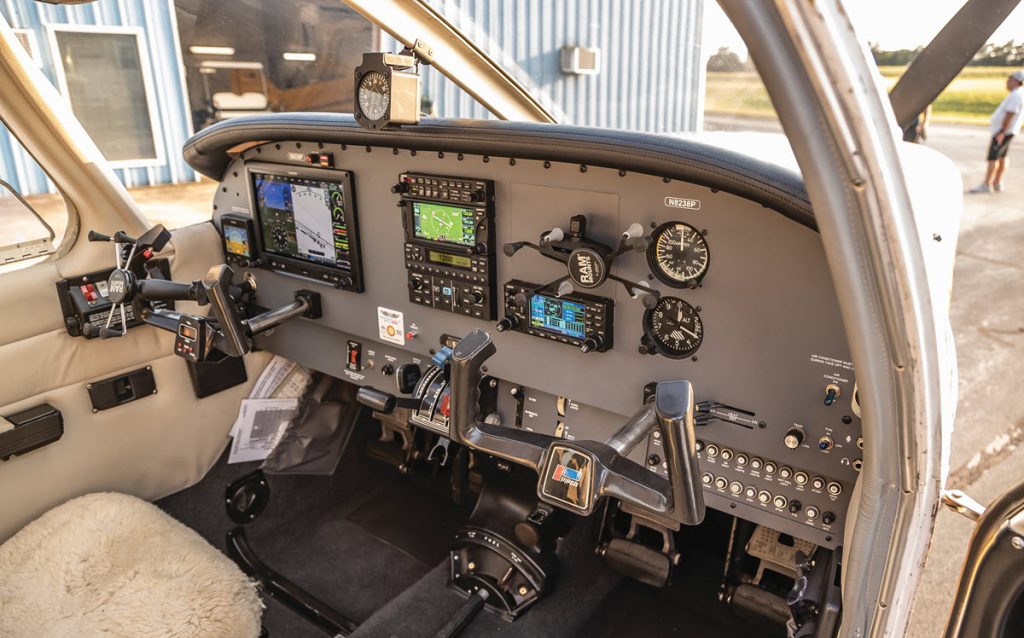
Connor purchased a 1980 PA-32-301T, tail number N8238P, less than a year ago. While he feels it would be a stretch to put six people in there, plus their baggage, it’s the ideal size for Connor and his wife, Trish, two additional human passengers, and their four dogs (two labs and two wiener dogs), to travel anywhere they want to go.
Broadening Horizons
The Saratoga, with its turbo feature, opened up new horizons for Connor. He is able to go on longer missions with more people on board, which he really enjoys. Flying to the Mustang Island coast in Port Aransas has become a favorite outing. The landing strip is just across the street from the beach and golf carts are available for rent, if you’re looking for a way to get around the area. It was on one of these trips to the coast that Connor discovered N8238P needed a few upgrades – at least to make him feel more confident in flight.
Connor and Trish were taking their first night flight in the Saratoga when a storm kicked up. The panel lights and landing lights were so dim, he could barely read the instruments. They almost flew directly into that storm. Thankfully, they avoided the squall and landed safely. But the fact that Connor was on the edge of his seat during most of the flight prompted him to make some panel and light upgrades.
Upgrades and Changes
The panel was fairly decent with its GTN650, 430W, MX500, along with several other nice features. But he was accustomed to flying with the additional information the G3X provided. So, one of the first things he redid was the panel. It now features the G3X he wanted, plus a GFC500 autopilot, G5, GDL88 and ADS-B/XM weather. He now has the information redundancy his former plane provided; which makes longer trips not only possible but safer and more comfortable to navigate.
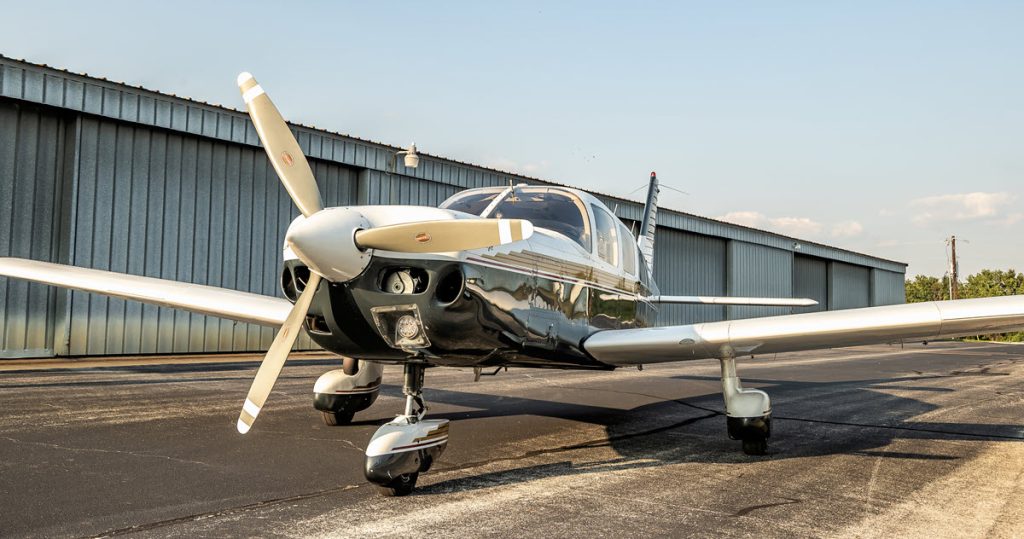
There was one surprise waiting for the mechanic who worked on the aircraft. First, he found an abandoned rat’s nest behind the panel. Then, when he reached for what he thought was a tool he’d left behind, he found what remained of the rat. Startled, he jumped back and threw the remains across the hangar!
Though Connor is grateful for the upgraded avionics, he said the process has been a bit of a nightmare. The initial work took 16 weeks. However, it took a full 11 months of ownership to work out all the kinks. He had to send out the magneto three different times, found a turbo leak, and had a pricey annual.
While the panel was torn apart, Connor decided to go ahead and tackle the worn interior. “The leather seats weren’t in bad shape, but they were an ugly gray. The carpet was also gray and completely worn. It pretty much disintegrated when I tried to remove it,” Connor explained.
The old carpet was replaced with SCS Featherweight smoke-colored carpeting. Connor painted all the armrests, seat rails and other paintable parts. Then, rather than replace the leather seats, he dyed them beige, which should keep them looking nice for many years to come. Connor is very pleased with the results. “It took me weeks, but turned out fantastic and now has a luxury feel.” The final piece of interior work Connor has taken care of was cleaning the air-conditioning ducts to make the most of the precious commodity, “a must in the Texas heat.”
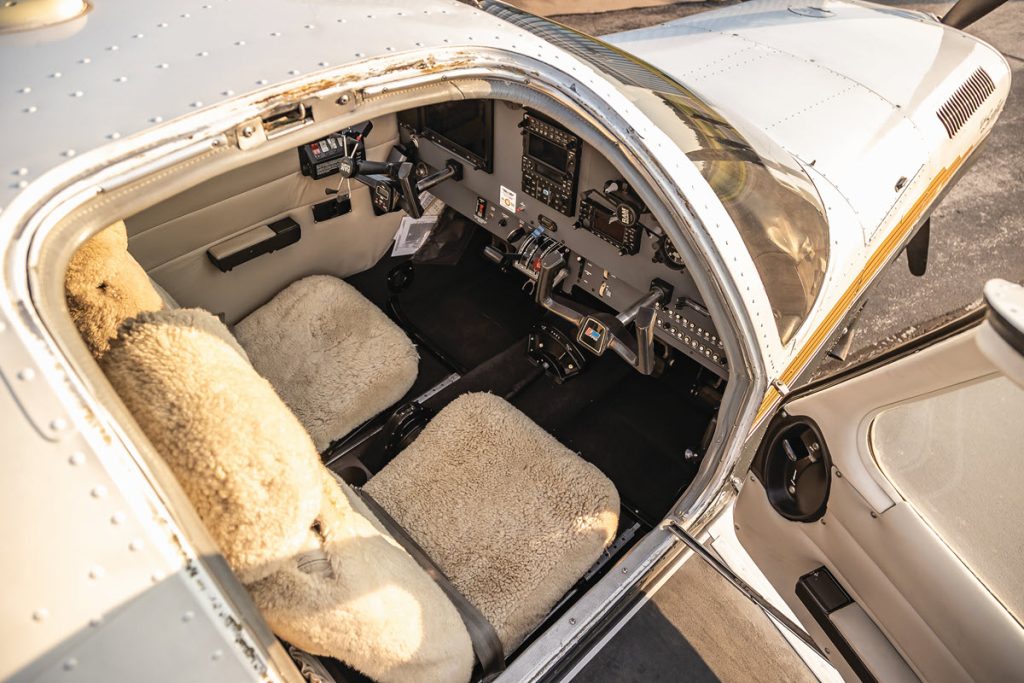
The only exterior lights that have been replaced thus far are the landing lights, which were replaced with LEDs. However, Connor plans to replace all the navigation and strobe lights. And, he noted, if the GTN650 or 430 ever go out, the panel is all set to accept a GTN750 with only minor adjustments.
Once the work was completed, Connor and Trish flew their Saratoga from Brenham, Texas, to Boulder, Colorado, and learned more about the aircraft. Though it burned more fuel than anticipated, they were able to make the five-and-a-half hour flight with only one fuel stop, averaging about 150-155 knots between 10,000 and 12,000 feet. The flight also revealed a loose wire on the circuit breaker panel that was giving them trouble — but was resolved without incident. “The avionics upgrades made the flight to Colorado very comfortable with the new autopilot, EIS, and ADS-B/XM weather capabilities.”
Forward Thinking
Since Connor took possession of N8238P about a year ago, the known maintenance issues have been addressed. The Saratoga seems to be well supported with readily available parts, which Connor gets from Aircraft Spruce or Gallagher Aviation.
Now that his airplane is out of the shop and running smoothly, Connor hopes to fly about 100 hours a year. With his costs for fuel, oil, insurance and the annual inspection, Connor estimates the cost of keeping his Saratoga flying this year was about $200 per hour. Of course, he hopes that cost will go down next year since all the major work is done.
Looking back, Connor wonders whether he should have absorbed the additional expense of getting his complex endorsement and going with a retractable gear model. Looking ahead, he sees many more opportunities to explore the country with family and friends — two-legged and four-legged alike.
The rest of this article and the specifications and performance stats for this plane can be seen only by paid members who are logged in.Have a website login already? Log in and start reading now.
Never created a website login before? Find your Customer Number (it’s on your mailing label) and register here.
JOIN HERE
Still have questions? Contact us here.

